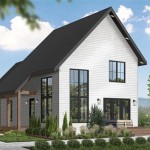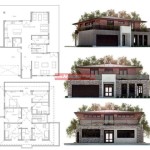Bat House Plans DIY: A Comprehensive Guide
Bats play a crucial role in maintaining healthy ecosystems. They are voracious insectivores, consuming vast quantities of mosquitos, moths, and agricultural pests. Providing bat houses offers these beneficial creatures a safe place to roost and raise their young, contributing to their conservation and benefiting local environments.
Building a bat house can be a rewarding DIY project. Numerous free bat house plans are available online from reputable sources such as bat conservation organizations and wildlife agencies. These plans typically offer detailed instructions, material lists, and diagrams, guiding builders through each step of the construction process.
Several key considerations contribute to a successful bat house design. These factors influence bat occupancy rates and ensure the structure provides a suitable habitat. Proper ventilation, landing space, and internal roosting chambers are essential components. The chosen materials, dimensions, and mounting location also play significant roles in attracting bats.
Ventilation is crucial for regulating temperature and humidity within the bat house. Proper airflow prevents overheating, which can be particularly detrimental to bat pups. Plans often incorporate ventilation slits or gaps in the construction to facilitate air circulation.
Landing space is essential for bats to enter and exit the house. A rough landing surface, typically achieved through grooved or textured wood, provides bats with the necessary grip. The landing area should extend several inches below the entrance to allow for easy access.
Internal roosting chambers provide bats with a secure space to cling to. These chambers are typically created by partitioning the interior of the bat house with thin wooden dividers. The narrow spacing between these partitions mimics the tight crevices bats naturally seek for roosting.
Material selection impacts both the durability and effectiveness of the bat house. Untreated, exterior-grade plywood or cedar are common choices due to their weather resistance and ability to breathe. Avoid using pressure-treated lumber, as the chemicals can be harmful to bats. Painting the exterior black or dark brown helps absorb sunlight and maintain a warmer internal temperature.
Dimensions are critical for creating a suitable roosting environment. The specific dimensions will vary depending on the bat species targeted, but generally, bat houses should be taller than they are wide. This configuration allows for adequate roosting space and temperature gradients within the structure.
Mounting location significantly influences bat occupancy. Bat houses should be mounted in a location that receives at least 6-8 hours of direct sunlight per day. This exposure helps maintain optimal internal temperatures. A height of 12-20 feet above the ground is recommended, providing bats with a clear flight path and protection from predators.
Choosing the right bat house plan requires consideration of the local bat species. Different species have varying habitat preferences. Consulting resources from local wildlife agencies can help determine the most appropriate design for attracting bats in a specific region.
Building a bat house typically involves several steps. Following a detailed plan ensures proper construction. Cutting the wood according to the plan's specifications, assembling the structure using appropriate fasteners, and ensuring tight seams are essential for creating a durable and effective bat house.
Caulking any gaps or cracks in the assembled structure helps prevent drafts and maintains a stable internal environment. Using a weatherproof sealant also prolongs the lifespan of the bat house by protecting it from moisture damage.
Mounting the bat house securely is crucial for its stability and longevity. Using sturdy mounting hardware appropriate for the chosen location ensures the bat house can withstand weather conditions and the weight of the bats.
Maintenance and monitoring are essential after installation. Regular inspections for signs of damage or deterioration, such as warping or cracks, are necessary. Cleaning the bat house periodically, preferably during the winter months when bats are hibernating or have migrated, helps maintain a healthy environment.
Observing bat activity around the house can provide valuable insights into its effectiveness. While immediate occupancy is not always guaranteed, consistent monitoring can help identify any potential issues affecting bat usage.
Numerous online resources provide further information on bat house construction, placement, and bat conservation. Organizations dedicated to bat conservation offer detailed plans, educational materials, and support for individuals interested in providing habitat for these beneficial mammals.
Building a bat house contributes to the conservation of these important creatures while also providing natural pest control. By following a well-designed plan and considering the specific needs of bats, individuals can create a valuable habitat that benefits both the bats and the local environment.

Bat House Plans Bird

Bat Houses Mass Gov

Bat House Plans Diy
Bat House Plan

How To Build A Bat Box The Wildlife Trusts

Bathouse

20 Diy Bat House Plans Insteading

Bat House Complete Detailed Diy Plans Only

How To Build A Bat House Lee Valley Tools

Scout Goes To Bats For Weld S West Nile Fight Build A Bat House Plans








